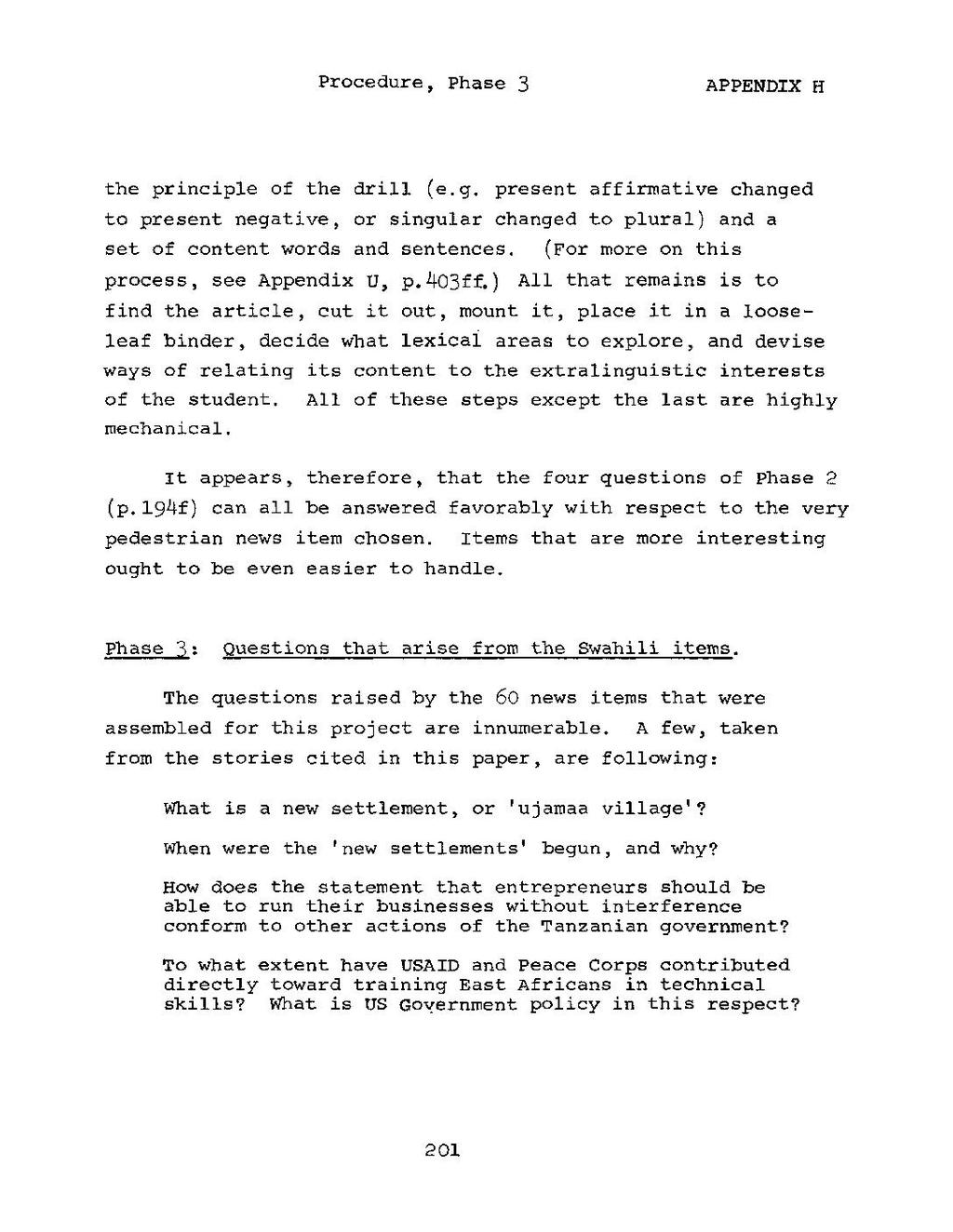the principle of the drill (e.g. present affirmative changed to present negative, or singular changed to plural) and a set of content words and sentences. (For more on this process, see Appendix U, p.403ff.)
All that remains is to find the article, cut it out, mount it, place it in a looseleaf binder, decide what lexical areas to explore, and devise ways of relating its content to the extralinguistic interests of the student. All of these steps except the last are highly mechanical.
It appears, therefore, that the four questions of Phase 2 (p.194f) can all be answered favorably with respect to the very pedestrian news item chosen. Items that are more interesting ought to be even easier to handle.
Phase 3: Questions that arise from the Swahili items.
The questions raised by the 60 news items that were assembled for this project are innumerable. A few, taken from the stories cited in this paper, are following:
What is a new settlement, or 'ujamaa village'?
When were the 'new settlements' begun, and why?
How does the statement that entrepreneurs should be able to run their businesses without interference conform to other actions of the Tanzanian government?
To what extent have USAID and Peace Corps contributed directly toward training East Africans in technical skills? What is US Government policy in this respect?
201
